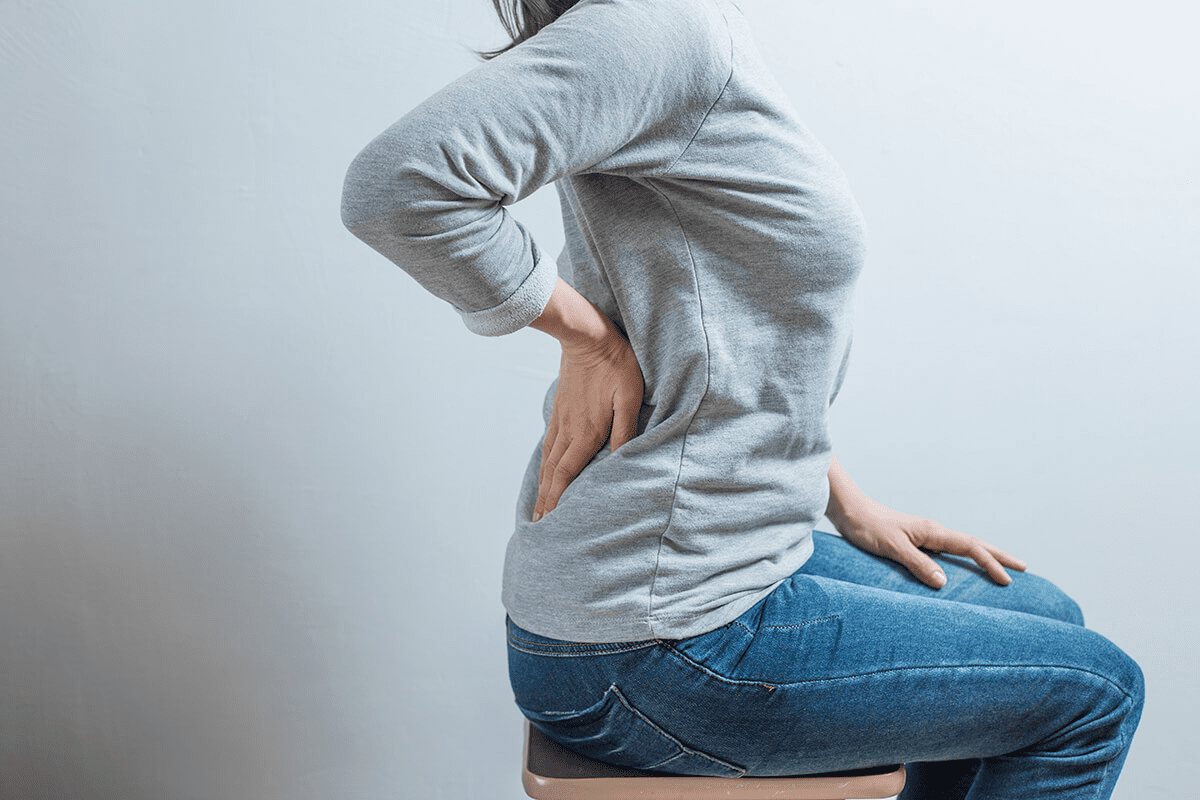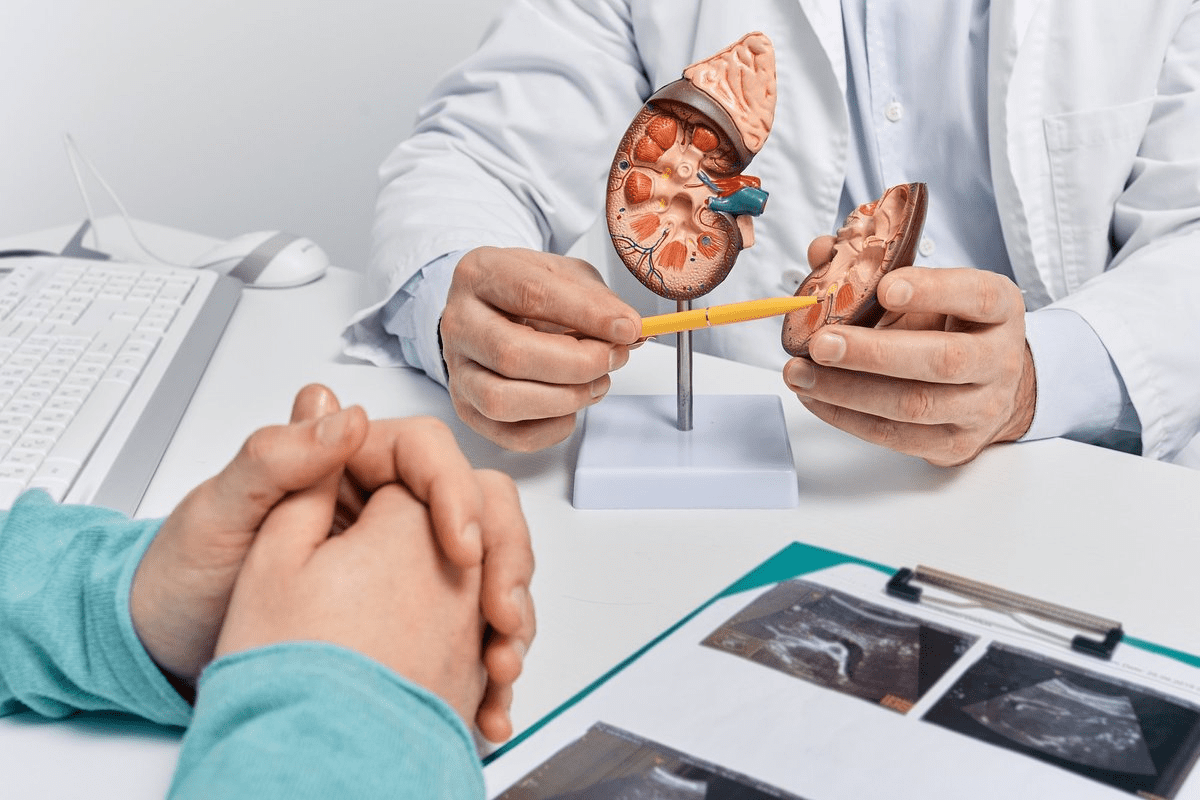Last Updated on October 31, 2025 by Bilal Hasdemir

Urinary tract stones, also known as kidney stones or urinary calculi, are a big health problem worldwide. They affect millions of people. In the United States, about 1 in 11 people get kidney stones.
Getting a kidney stone can hurt a lot and scare you. If it’s your first time or you’ve had them before, knowing how to treat them is key.
At Liv Hospital, we offer top-notch care for urinary tract stones. We’ll show you how to treat kidney stones step by step. This way, you get the best care possible.
How to treat high levels of urinary tract crystals and prevent them from forming into symptomatic kidney stones.

Urinary tract stones, also known as kidney stones, are hard deposits made of minerals and salts. They form inside the urinary system. These stones can cause severe pain, nausea, and vomiting. They can also lead to complications if not treated properly.
The urinary system includes the kidneys, renal pelvis, ureters, bladder, and urethra. All these parts are possible locations for stone formation.
Urinary tract stones are formed through the crystallization of minerals and salts in the urine. This process can occur due to dehydration, diet, and genetic predisposition. Studies show that kidney stones affect about 1 in 10 adults. Men are more likely to be affected than women.
A significant proportion of urinary tract stones are calcium-based. Calcium oxalate is the most common type. Other types include uric acid stones, cystine stones, and struvite stones. Each type has different causes and risk factors.
“The increasing prevalence of kidney stones is a significant public health concern. Dietary and lifestyle factors play a key role in their formation.”
There are several types of urinary tract stones, each with its own characteristics and causes. The most common types are:
Stone Type | Common Causes | Risk Factors |
Calcium Stones | Dietary factors, metabolic disorders | Family history, dehydration |
Uric Acid Stones | High-protein diet, gout | Obesity, diabetes |
Cystine Stones | Genetic disorder | Family history |
Struvite Stones | Urinary tract infections | UTIs, urinary tract abnormalities |
Urinary tract stones can form in any part of the urinary system. This includes the kidneys, renal pelvis, ureters, bladder, and urethra. The location of the stone can affect symptoms and treatment options.
Stones in the kidneys or ureters can cause severe pain. Stones in the bladder may cause urinary retention or infection. Understanding where stones can form is key for effective diagnosis and treatment.
Diagnostic imaging techniques, such as CT scans or ultrasound, are often used. They help determine the location and size of the stones.

It’s important to know the signs of urinary tract stones to get the right treatment. We’ll show you the common symptoms and when to see a doctor.
Urinary tract stones can cause different symptoms. Here are some common ones:
The severity of symptoms depends on the stone’s size and where it is. Look out for these signs of a more serious issue:
Knowing when to go to the emergency room is key. Go right away if you have:
Knowing these symptoms helps you get help fast. This can prevent bigger problems and improve your health.
The journey of urinary tract stone formation starts with mineral crystallization in the urine. This complex process is influenced by several factors. These include the concentration of minerals, pH levels, and the presence of other substances.
Crystallization happens when urine becomes supersaturated with minerals like calcium, oxalate, and uric acid. These minerals form crystals, which are the foundation of stones. Factors like dehydration, dietary patterns, and certain medical conditions can lead to supersaturation.
A diet rich in animal protein and salt can raise mineral levels in urine, encouraging crystallization. Also, conditions like hyperparathyroidism can cause too much calcium, raising the risk of stone formation.
Urinary tract stones can be made of different minerals. The most common types are calcium oxalate stones, uric acid stones, and struvite stones. Knowing the mineral makeup of a stone can help doctors understand its cause and choose the right treatment.
Once crystals form, they can grow into larger stones. This growth is influenced by substances in the urine. For example, citrate can prevent calcium stones by binding to calcium. Certain proteins can either help or hinder stone growth.
Grasping these processes is key to creating effective prevention and treatment plans. By tackling the root causes of stone formation, we can lower the risk of them coming back and ease symptoms.
Urinary tract stones form due to genetics, medical conditions, and lifestyle. Knowing these factors helps prevent and manage stones.
Genetics play a big role in getting urinary tract stones. If your family has a history of stones, you might get them too. Some genes affect how the body handles minerals, raising stone risk.
Some medical issues raise stone risk. For example, renal tubular acidosis and hyperparathyroidism affect the kidneys. Also, chronic infections or inflammation in the urinary tract can lead to stones.
What you eat and how you live can also affect stone risk. Eating too much sodium and animal protein and not drinking enough water can increase risk. Being overweight or obese also raises the risk.
Living in hot places or jobs that make you sweat a lot can cause dehydration. This is a big risk for stones. Exposure to toxins can also contribute to stone formation.
Knowing these risk factors helps you take steps to avoid urinary tract stones. Make smart lifestyle choices and talk to a doctor if you’re at risk.
Diagnosing urinary tract stones requires a detailed approach. This includes initial checks, lab tests, and imaging methods. We’ll explain how your doctor will accurately diagnose these stones.
The first step is a detailed medical history and physical exam. Your doctor will ask about your symptoms and medical history. They’ll also look at your family’s history of kidney stones.
This initial check helps spot risk factors. It also guides further tests to find the cause.
Laboratory tests are key in diagnosing urinary tract stones. These tests may include:
Imaging tests are vital for confirming the presence and location of urinary tract stones. Common imaging techniques include:
A leading urology expert says, “Imaging tests are critical in the diagnosis of urinary tract stones. They allow for precise localization and sizing of stones, which guides treatment decisions.”
“The choice of imaging modality depends on the clinical scenario, patient factors, and the suspected location and size of the stone.”
Analyzing the composition of a passed stone is key. It helps understand why the stone formed. This info guides preventive measures and treatment plans. Stone analysis uses spectroscopic techniques to determine the stone’s mineral composition.
By combining these diagnostic steps, healthcare providers can create a treatment plan that meets your needs.
Treatment for urinary tract stones can vary. It can range from simple management to more complex procedures. The choice depends on the stone’s size, type, and location. It also depends on the patient’s symptoms and health.
Pain management is key when treating urinary tract stones. We often start with over-the-counter pain relievers like ibuprofen or acetaminophen. For severe pain, we might use prescription opioids. But, we use these with caution due to side effects and risks.
Common Pain Management Options
Pain Reliever | Typical Use | Potential Side Effects |
Ibuprofen | Mild to moderate pain | Gastrointestinal upset |
Acetaminophen | Mild to moderate pain | Liver damage (high doses) |
Opioids | Severe pain | Dependence, constipation |
For small stones, medication can help them pass. Alpha-blockers relax the ureter muscles, making it easier for the stone to move. We also use medications to prevent stone recurrence.
The type of stone affects the medication choice. For example, potassium citrate can prevent certain stones by lowering acidity. For cystine stones, tiopronin is used to reduce cystine excretion.
While many stones can be managed without surgery, some need more advanced treatments. This is true for large stones, those causing blockage, or those with complications like infection or kidney damage.
Surgical and procedural interventions are key for managing urinary tract stones. They help with pain, prevent complications, and aid in recovery. This is true for larger stones that cause symptoms.
Extracorporeal Shock Wave Lithotripsy (ESWL) is a non-invasive method. It uses shock waves to break down stones into smaller pieces. These pieces can then be easily passed out of the body.
It’s best for stones in the kidney or upper ureter. ESWL is usually done on an outpatient basis. Success depends on the stone’s size, location, and type.
Ureteroscopy uses a small scope to see the stone in the ureter. The stone can then be removed or broken down with laser energy.
This method is very effective for ureter stones. It’s often done on an outpatient basis, with quick recovery times.
Percutaneous Nephrolithotomy is a minimally invasive surgery. It’s used for larger stones or those causing blockages. A small incision in the back accesses the kidney directly.
This procedure is great for complex or large stones. It’s used when ESWL or ureteroscopy can’t work.
In some cases, open or laparoscopic surgery is needed for stone removal. These methods are for more complex cases or when other treatments fail.
Laparoscopic surgery is less invasive. It offers shorter recovery times and less pain after surgery.
Medical treatments are key, but home remedies and self-care are also important for urinary tract stones. Making lifestyle changes and using natural remedies can help ease symptoms and prevent stones from forming again.
Drinking enough water is a top way to prevent urinary tract stones. Water dilutes urine, lowering mineral concentration that can cause stones. It’s advised to drink 8-10 glasses of water daily, but needs can change based on activity, climate, and more.
“Drinking plenty of water is one of the simplest and most effective ways to help prevent kidney stones,” a study in the Journal of the American Society of Nephrology found.
“Increasing fluid intake to reduce the concentration of minerals in the urine can significantly reduce the risk of stone formation.”
Changing your diet can also help manage urinary tract stones. Reducing sodium intake lowers urine calcium, which helps prevent stones. Also, eating less foods high in oxalate, like spinach and beets, is good for those prone to certain stones.
Some natural remedies are backed by science for urinary tract stones. Citrate supplements can prevent certain stones by binding with urine calcium. Herbal teas like dandelion root tea may also help by increasing urine production and lowering stone risk.
Regular exercise is good for health and can lower urinary tract stone risk. Doing moderate exercise, like brisk walking or cycling, for 30 minutes daily is beneficial. But, remember to drink enough water to avoid urine mineral concentration.
By adding these home remedies and self-care to your daily routine, you can manage urinary tract stones better and lower the chance of them coming back.
Knowing why you got kidney stones is key to stopping them from coming back. This info helps you make better food choices and lifestyle habits. Doctors might also suggest certain medicines to help prevent stones.
Your diet is very important in stopping stones from coming back. Drinking lots of water is a top way to prevent stones. Try to drink enough water to make at least 2 liters of urine each day.
Other food changes you might need to make include:
Dietary Component | Recommendation |
Fluid Intake | At least 2 liters of urine output per day |
Sodium | Less than 2,300 mg per day |
Animal Protein | Limit intake |
Changing your lifestyle can also help stop stones from coming back. Exercising regularly is good for your health and can lower your risk of getting stones.
Other lifestyle changes include:
In some cases, doctors might give you medicine to help prevent stones. The kind of medicine you get depends on the type of stones you have.
For example:
It’s important to see your doctor regularly to check if your prevention plan is working. This might include urine tests, imaging, and visits to your doctor to adjust your treatment if needed.
By working with your doctor and making the right food and lifestyle changes, you can lower your risk of getting stones again.
Urinary tract stones, also known as kidney stones, are a serious health issue. They need quick medical help. This article covered how they form, their symptoms, how to diagnose them, and treatment options.
Knowing the risk factors and spotting symptoms early can help get medical care fast. This can lower the chance of serious problems. We talked about medical and surgical treatments, and also home remedies and self-care to prevent kidney stones.
If you keep getting symptoms, you should see a doctor. With the right treatment, you can manage kidney stones well. Making long-term diet and lifestyle changes can also lower your risk of getting them again.
Urinary tract stones are hard mineral deposits in the urinary system. This includes the kidneys, ureters, bladder, and urethra.
Symptoms include severe pain in the lower back and side. You might also feel pain when you urinate, see blood in your urine, or feel nauseous and vomit. Some people have to urinate often or feel pain while doing so.
Doctors use a physical exam, lab tests, and imaging like X-rays or CT scans. These help find and size the stones.
Treatment depends on the stone’s size, location, and type. It can include pain relief, medication, or surgery like ESWL or ureteroscopy.
To prevent stones, drink more water and avoid certain foods. Making these changes and sometimes taking medication can help.
Risk factors include genetics, certain medical conditions, and diet. Dehydration and a sedentary lifestyle also increase risk.
Small stones might pass with hydration and diet changes. But, larger stones or severe symptoms need medical help. Natural remedies can help with symptoms or prevention.
Drinking enough water helps prevent stones. It dilutes urine and lowers mineral concentration. Keeping your urinary system healthy is key.
Go to the emergency room for severe pain, vomiting, fever, or infection signs. These could mean a serious issue that needs quick attention.
National Center for Biotechnology Information. (2025). How to Treat Urinary Tract Stones A StepbyStep. Retrieved from https://www.ncbi.nlm.nih.gov/pmc/articles/PMC4761115/
Subscribe to our e-newsletter to stay informed about the latest innovations in the world of health and exclusive offers!
WhatsApp us